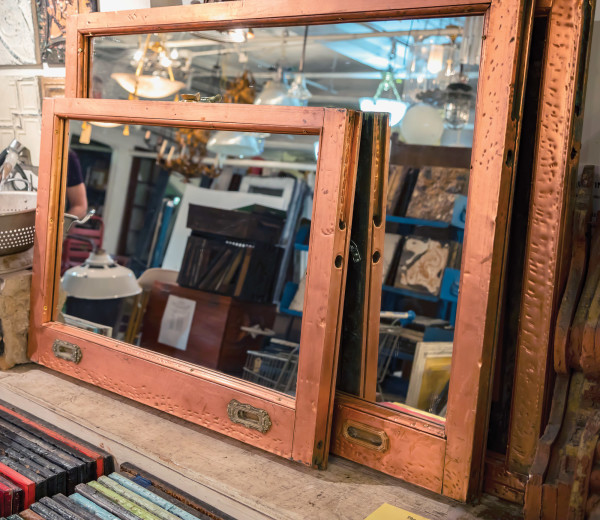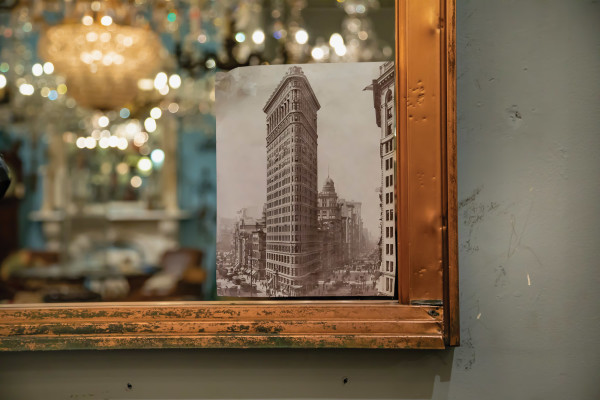New York City’s iconic Flatiron Building is undergoing major renovation and upgrades, following the departure of long-time tenant Macmillan Publishers. Olde Good Things had salvage rights to the famously drafty copper-clad windows that remained. The company sells these as-is, or cleaned, prepped, and even silvered for use as mirrors.
Copper-clad window sash from NYC’s Flatiron Building became industrial-chic mirrors: oldegoodthings.com John Neitzel
James and Michelle Morgan of Union Square recently bought a large window-mirror to use in their apartment, which is in an 1891 former Woolworth’s warehouse with 13′ windows and 21′ ceilings. “We like to use salvage, and we needed something that goes with the industrial aesthetic,” they say.
Designed by Chicago architect Daniel Burnham, the 22-storey Flatiron Building (named for its triangular shape resembling a cast-iron clothing iron) was built in 1902.
The Process
1. SET UP
Turning a vintage window frame into a mirror is usually a DIY project. Decide which side of the window you want to see with the mirror; usually that’s the inside of the sash, as it may be fancier, in better shape, and even retain old hardware.
Use a sturdy worktable and be sure to wear gloves and safety glasses to prevent injury while working with fragile glass.
NYC’s Flatiron Building John Neitzel
2. REHAB THE FRAME
Remove the glazing putty so that you can take out the glass. Work slowly and carefully with a chisel and scrapers; you can try heating the putty with a hairdryer or heat gun (but shield the glass to prevent cracking). Use needle-nose pliers to pull out the tiny metal glazing points. Keep glass if necessary as a template.
Clean a wood window with paint remover or a wire brush, using a Dremel tool if needed. Finish with a light sanding and seal the wood with Benite wood sealer, or use semi-gloss finish paint. Some people recommend painting the inside perimeter of the “frame” matte black, to avoid reflections in the mirror.
3. ADD THE MIRROR
Draw a pattern of the frame (the old sash) on /” plywood, and have a mirror cut to fit. If you plan to use the piece in a damp area, spray the back of the mirror with shellac to avoid spotting. Rest mirror in frame, then caulk the back sparingly with mirror silicone and let dry. Screw or nail in a backer board made of ” plywood, to prevent glare or transparency in the mirror. Use screw-eyes and wire on the back for hanging; if it’s large or heavy, attach it into wall studs, or use cleats.







